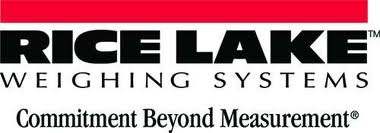I picked up a customer recently who was tired of the high cost of repairs with their old scale company. It seemed that whenever one of their scales would go down it would have multiple components fail. The load cell, a j-box and the indicator would all go at once. I have only had multi component failures in very few instances and only in severe environmental conditions, like high pressure wash down and immersion or where the scale was abused. I find that when a technician has found multiple failures it is more likely that he is not sure where the problem lies and is throwing everything at it until the problem is fixed. He arrives on site and the scale is drifting. Aha! He thinks it has a bad load cell. He replaces the load cell and it is still drifting. Ok, well it must be the indicator. Now the indicator gets replaced, oh no, the scale is still drifting. Well, it must be the j-card; ah shoot the home run cable is smashed next to the j-box. Well, he got the ok to replace the j-box, might as well replace it as well as put in a new cable. Then he can look good by telling the customer that he’s not going to charge them for the cable. This seems to be a fairly common scenario, because I have heard it many times. I don’t think it is dishonesty that makes it happen; just the technician’s desire to look good in front of his customer and not understanding proper troubleshooting practices. When proper troubleshooting practices are followed the above scenario would not and could not happen.
A technician should always have the tools necessary to trouble shoot the scales he will be working on. To be properly equipped he should have a good load cell simulator, a multimeter capable of reading up to 5000 mΩ or displaying nanoSiemens (nS), a measure of conductance (mΩ = 1000 ÷ nS), a 9 volt battery, and the necessary technical manuals for the equipment. He should also have a thorough grounding in how to use them.
By following the steps outlined below a technician should be able to trouble shoot most scales in a relatively efficient manner. The steps should be followed until the problem is resolved or the problem can’t be found. Many times an intermittent problem will not repeat while you are troubleshooting the scale and everything will appear normal.
It is dangerous for the novice troubleshooter to fall into the trap of familiarity. Just because a problem looks like something you have seen before doesn’t mean the cause of the problem is the same. After a while familiarity will help your troubleshooting but learn to do it correctly first before taking short cuts.
Troubleshooting Steps:
- Determine from the operator and/or observation what the problem is. Without a thorough understanding of what is going wrong the technician can spend fruitless time searching for the solution to an imaginary problem. Sometimes the problem lies with customer expectations, and the equipment is incapable of performing the expected task or the customer is not properly trained in the use of the scale.
- Thoroughly examine all of the components of the scale noting any discrepancies and deficiencies. For example debris under the scale, the hole in the keypad, the abraded cable, any of these could be the problem or an additional problem that could be confusing the issue further. Next, correct these deficiencies where possible and re-examine the symptoms.
- Check the scale setup, dip switches, jumpers and program to ensure that the indicator is set up correctly. The following are real samples of problems that I have seen in the field.
- The GSE 250/255 has a program soft switch to select 4 or 6 wire load cells. If the unit is set for 6 wire and a 4 wire load cell is used, the scale does not respond to weight.
- On the old Fairbanks H90-5200, the one that has dip switches. If the dip switches are set incorrectly the scale can display underload/overload or even drift.
- Several manufacturers have indicators that have a 2mV/V – 3mV/V jumper that can prevent an indicator from going to full scale if set incorrectly. I had one that would weigh perfectly to 72,380 lbs but then stop going up over that weight. I spent hours hunting for that problem.
- The Mettler Toledo Jaguar/JagXtreme relies on an internal backup battery and when it dies the setup can be completely lost.
Scale controllers have too many variations to list the possible problems in set up, however if the instrument is set up correctly the problem most likely exists on the electrical side.
- If the problem is not in the set up of the scale then remove all of the accessories, printers, scoreboards, computers, chart recorders, set point boards, etc…. Any of these accessories could be causing the problem with the scale, through feedback, shorts, miscommunication or numerous other possible ways. If the problem goes away it was in the accessories. Re-connect the accessories one at a time until the problem starts again; once it does you have found your problem component.
- If the problem does not go away; put the indicator on a simulator. Check for stability and linearity. The indicator should be stable and by clicking the simulator up and down should repeat and increase and decrease in a linear fashion. If the indicator does not perform correctly then it should be repaired or replaced.
- If the indicator passes, the home-run cable should be re-connected, and the simulator should be connected at the j-box. This test is to determine if the home run cable is good. The cable can look fine but still be damaged inside the jacket. If the scale fails and has transient voltage protection (surge voltage protection, SVP) in line with the indicator, bypass the transient voltage protection (SVP), if this works then replace it. If it doesn’t, replace the home run cable and retest the scale.
For Single Load Cell Systems:
- Check the wiring at the load cell, perform load cell tests or if possible replace the load cell. If this fixes the problem then it was the load cell. If it doesn’t work go to step number 11.
For Multi Load Cell Systems:
- Remove all of the load cells from the J-Box and wire the Load Cell simulator to the J-card and test the test the Indicator for stability and linearity. Does it work? If the indicator doesn’t work replace the J-card and retest it.
- If the j-card is good, test the load cells by using the following tests:
- Tie the signal, excitation, and sense wires together and test their resistance to shield. The resistance should be at least 1000 megohms, or less than 1 nanoSiemen. If it isn’t registering in the correct range then the load cell should be replaced.
- If the load cell passes the first test, then wire the load cell to an excitation source (A 9 volt battery works fine.) The output of the load cell with no load should be approximately zero. If the load cell can’t be unloaded then you need to know the maximum output of the load cell, for example, a 3 mV/V load cell with 9 volts of excitation would be 27mV. Now a determination must be made to see if the output is above what you would expect and if it is then it needs to be replaced.
** An alternative to the above tests is to re-install the load cells one at a time until the bad load cell is found. This method does not always work due to indicator issues.
- After the load cells have been tested and if necessary replaced, the cells need to be re-wired to the j-box and the scale re-evaluated.
- Does the scale now work? If it doesn’t work re-evaluate the above tests to make sure they were done correctly. If everything was done correctly and the problem was not resolved call technical support.
Many manufacturers are willing to help you troubleshoot their equipment, because if the equipment can be maintained and repaired it doesn’t get replaced with their competitors. Some of the larger manufacturers will not help because they are trying to protect proprietary knowledge. If you are in a situation where the manufacturer can’t or won’t help, there are several companies that will help if your company has developed a working relationship with them. These companies are the after market repair companies such as National Scale & Control, Debac, RL Ziemba and others. They not only can provide support but often can provide the repair parts for the equipment, which is why they help. Contact them before you need them and find out what they need from you before calling for help. Nobody likes a freeloader and the time they work with you is an investment that they want a payback on.
By following a troubleshooting technique, whether mine or another, your technicians will find the problem faster and more efficiently. This makes for happier customers and less frustrated technicians.










